Riding the Train! How to buy tickets and use Suica
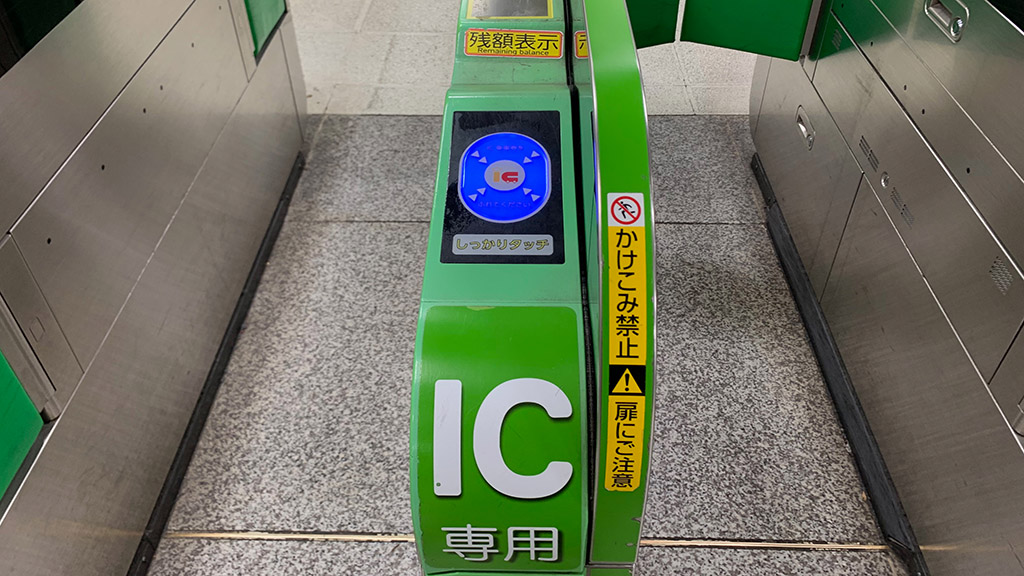
This post is also available in 日本語
Using the train is essential if you live in Japan. However, some people may feel it is difficult to ride the train when they first come to Japan. We shall explain “How to ride the train” in an easy-to-understand way using images.
Contents
How to ride the train
This differs depending on the route, but there are basically two methods of riding the train.
- How to purchase a ticket and ride the train.
Pay for the fare up to the destination and buy the ticket in advance. - Method of using and riding using transportation system IC cards
The fare is deducted from the cost charged in advance. There are a wide variety of cards, depending on the region, such as PASMO in the metropolitan area, and ICOCA in Kansai, but, on this occasion, we shall explain using the example of Suica.
How to purchase a ticket
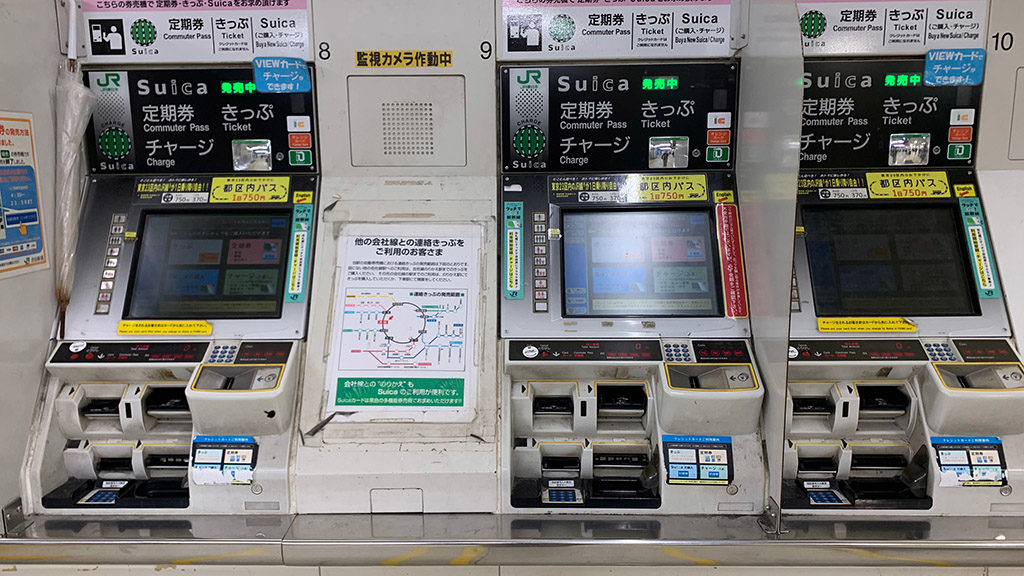
If you go to the station, there are ticket vending machines near the ticket gates. Look for machines with “Ticket” written on them.
Check the fare
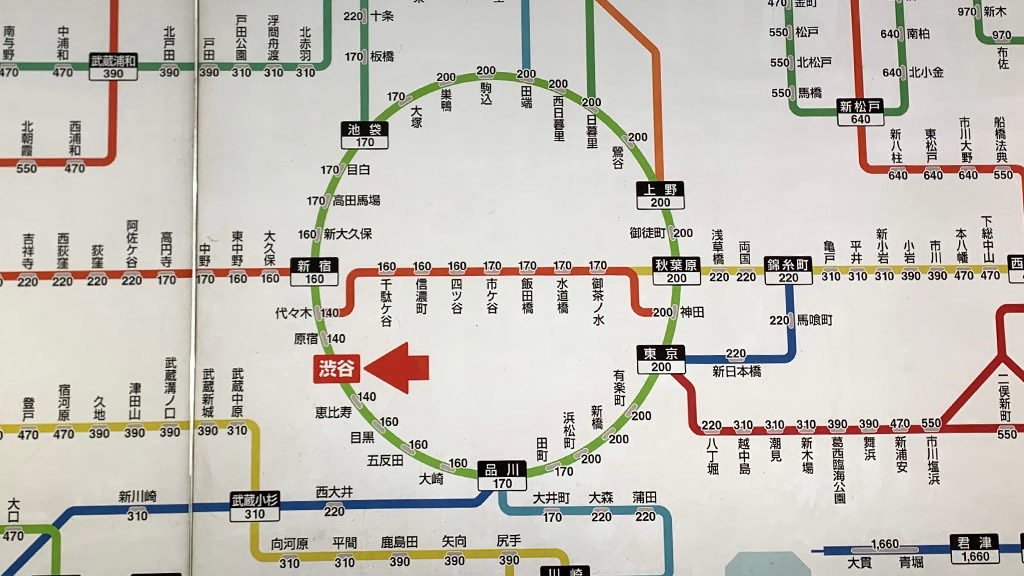
Search for the destination and confirm the fare using the route map, which is above, or next to, the ticket vending machines. Your current location will be displayed bigger than other stations and in red.
For example, let us consider a case where we use JR East to go from our current location Shibuya to the destination location of Akihabara. “200” is displayed underneath the characters for Akihabara. This indicates that the fare from Shibuya to Akihabara is 200 yen.
Purchase the ticket
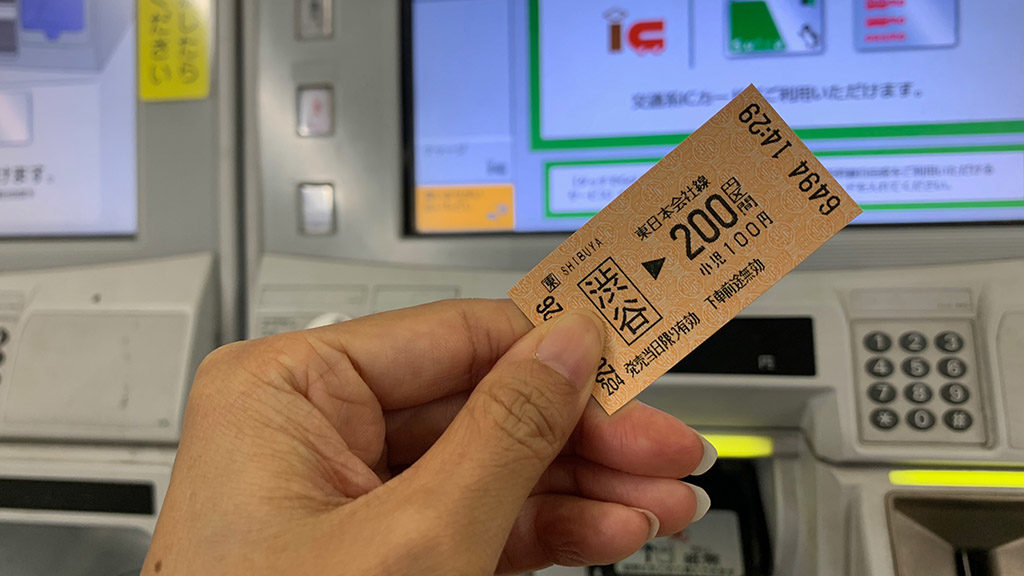
There are several different types of ticket vending machines. If a menu screen is first displayed, press the “Ticket” button. If it is a multilanguage-compatible machine, you can select the language to use.
Next, select the amount required for your destination. As the amount to get to Akihabara on this occasion is 200 yen, press the <200> button.
Next, insert coins or a bank note. The screen changes, and the ticket is issued. Make sure you do not forget to take your ticket and any change.
Pass through the ticket gates with the ticket

When boarding the train, you pass through the ticket gates. Ticket gates include automatic ticket gates and manned ticket gates. When passing through automatic ticket gates, insert your ticket in the slot marked “ticket”. The gates in front of you will open, so pass through the ticket gate after receiving your ticket.

When you reach your destination, you will pass through the ticket gates again. Insert your ticket in the slot of the automatic ticket gates and pass through when the gates open. Your ticket is collected at the destination ticket gate, so will not come out again.
How to use a Suica
Route maps in Japan, especially in Tokyo, are considered to be the world’s most complex. For this reason, it is really difficult to find the charge. However, if you pre-charge transportation system IC cards, such as Suica, there is the convenience of being able to check the charge each time, and you will not need to purchase a ticket. There are times when you get an IC card discount etc. when it is slightly cheaper than the price of a ticket. If it is possible that you will be riding the train on a frequent basis, it is recommended that you use transportation system IC cards rather than tickets.
Procedure for issuing the Suica

The first time you get a Suica, you can purchase it a multi-functional vending machine with Suica written on it.

If you select, <Purchase Suica>, a screen is displayed that enables you to select one of “My Suica (name registered)”, “Suica card (name not registered)”, or “Charge”. In the case of My Suica, even if you lose it, you can carry out reissuing procedures, so this is recommended. On this occasion, we shall explain based on the precondition that “My Suica” is selected.
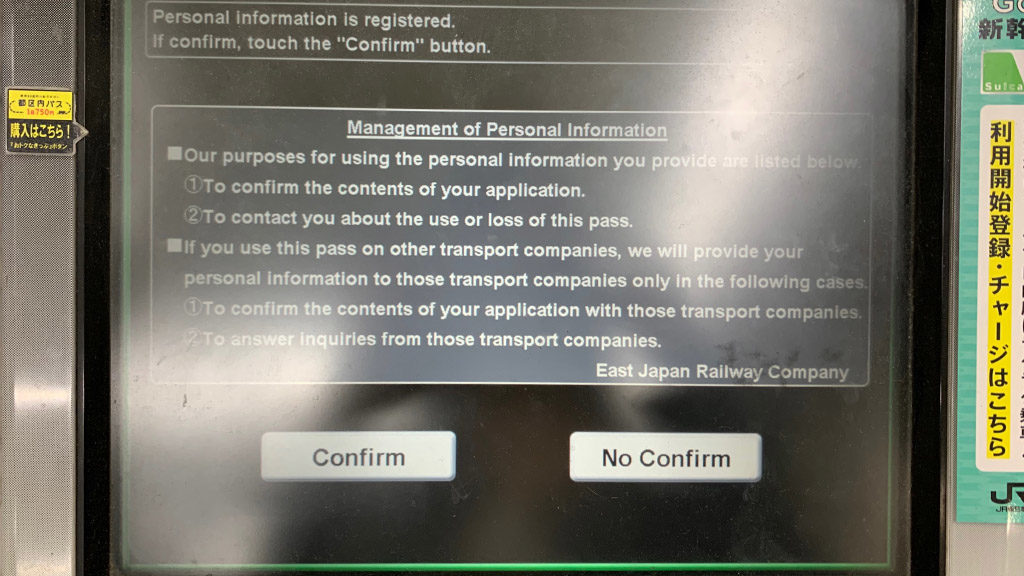
The screen for you to consent regarding the handling of personal information is displayed, and if you click <I consent> and enter your name, the Suica is issued from the machine. The first time you issue this, you will be charged a 500-yen deposit, but if you return the card when you no longer need to use the Suica, you will be refunded. You can purchase Suica in convenience stores, but as, at present, it is only possible to buy the “name not registered” type, you should purchase the card at the station.
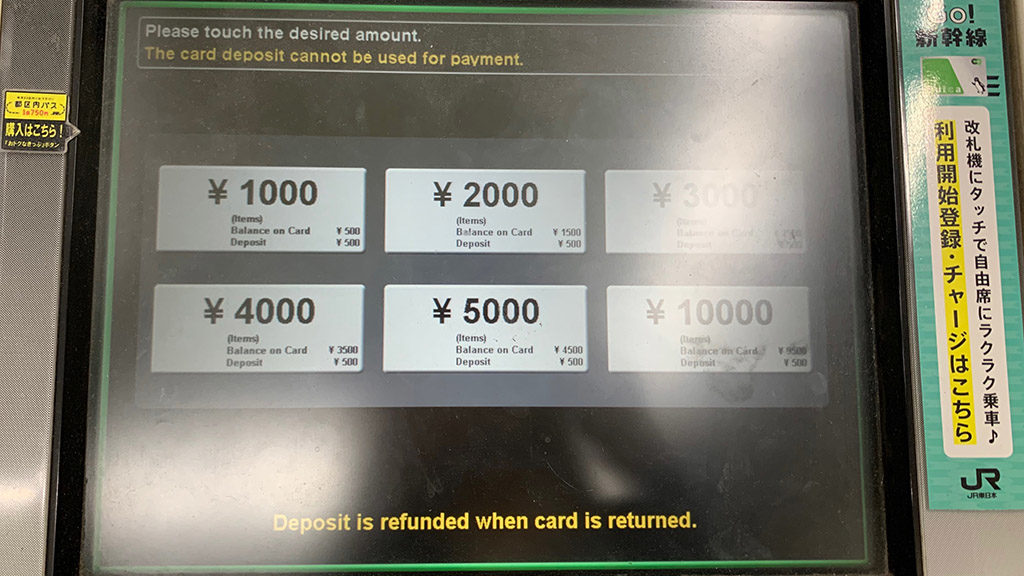
Touch your Suica at the automatic ticket gates

When you pass through the automatic ticket gates, the gates in front of you will open simply by you touching the Suica card on the section marked “IC”. Check the displayed balance. Although this differs somewhat depending on the route, in the case of JR East, the gates will not open if the balance is less than the cheapest fare from that station. Try passing through the ticket gates again after charging the card at the ticket vending machine.
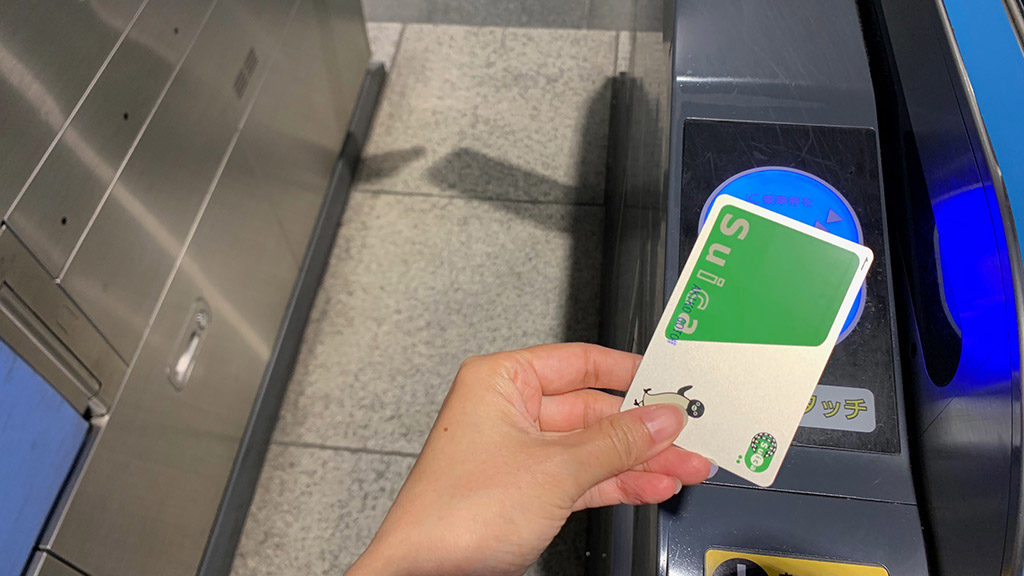
When you reach the destination, you will pass through the ticket gates again. If you touch the Suica card on the section marked “IC”, the gates in front of you will open and you can pass through. Again, if the balance does not cover the used fare, the gates will not open. Pass through the ticket gates again after charging at the automatic fare adjustment machine.
How to charge your Suica

There are several methods of charging your Suica. The simplest way of doing this is at the counter of convenience stores. Recently, in convenience stores, ATMs that allow you to charge are increasing. However, here we shall explain the method of using ticket vending machines and automatic fare adjustment machines in which “Station charge” is written.
If there is an area to place your Suica, place it there. If there is a Suica slot, insert the Suica into this slot.
Select the amount to charge, and enter bills covering the selected amount to complete the transaction. However, when using a machine in which you place the Suica, note that you must not move the Suica until the charge is complete.
Reference: JR East
https://www.jreast.co.jp/e/downloads/pdf/jr-east_guide_e.pdf
- If You Want to Improve Your Sleep Quality, You Should Change Your Pajamas! 3 Recommended Pajamas
- Conveniently 2-Way! This Product Is Useful in Both Summer and Winter.
- Easily Exercise at Home! Fashionable Design Lifts You!
- Fold Up Quickly! It’s a Handy Reusable Bag When You Go Shopping!
- If You Wonder What Should Give a Gift, This Is the Best Choice! Cool Packaged Handkerchiefs!









